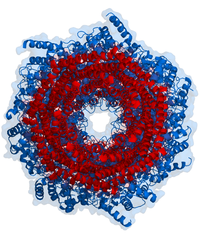
Photo from wikipedia
(1) Background: Malignant gliomas are aggressive tumors characterized by fast cellular growth and highly invasive properties. Despite all biological and clinical advances in therapy, the standard treatment remains essentially palliative.… Click to show full abstract
(1) Background: Malignant gliomas are aggressive tumors characterized by fast cellular growth and highly invasive properties. Despite all biological and clinical advances in therapy, the standard treatment remains essentially palliative. Therefore, searching for alternative therapies that minimize adverse symptoms and improve glioblastoma patients’ outcomes is imperative. Natural products represent an essential source in the discovery of such new drugs. Plants from the cerrado biome have been receiving increased attention due to the presence of secondary metabolites with significant therapeutic potential. (2) Aim: This study provides data on the cytotoxic potential of 13 leaf extracts obtained from plants of 5 families (Anacardiaceae, Annonaceae, Fabaceae, Melastomataceae e Siparunaceae) found in the Brazilian cerrado biome on a panel of 5 glioma cell lines and one normal astrocyte. (3) Methods: The effect of crude extracts on cell viability was evaluated by MTS assay. Mass spectrometry (ESI FT-ICR MS) was performed to identify the secondary metabolites classes presented in the crude extracts and partitions. (4) Results: Our results revealed the cytotoxic potential of Melastomataceae species Miconia cuspidata, Miconia albicans, and Miconia chamissois. Additionally, comparing the four partitions obtained from M. chamissois crude extract indicates that the chloroform partition had the greatest cytotoxic activity against the glioma cell lines. The partitions also showed a mean IC50 close to chemotherapy, temozolomide; nevertheless, lower toxicity against normal astrocytes. Analysis of secondary metabolites classes presented in these crude extracts and partitions indicates the presence of phenolic compounds. (5) Conclusions: These findings highlight M. chamissois chloroform partition as a promising component and may guide the search for the development of additional new anticancer therapies.
Journal Title: Molecules
Year Published: 2023
Link to full text (if available)
Share on Social Media: Sign Up to like & get
recommendations!